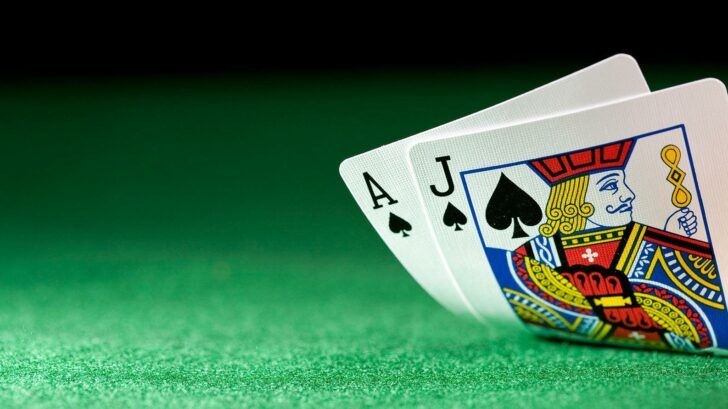How Hitting a Soft 17 Can Boost Your Blackjack Bankroll

Blackjack is a game of complexities; seemingly inconsequential rule variations can have significant effects on house edge.
Blackjack is a complex game. It looks simple enough on the surface: get cards which add up to 21, or close to it. But when it comes to figuring out how to give yourself an advantage over the dealer advanced strategy can twist your brain into knots. Seemingly inconsequential rule variations can have a big effect on the house edge. Knowing what to do is easy: just follow the standard strategy card provided by the casino. But if you want to delve deeper into the workings of this mysterious game, you need to figure out why you should do it. This piece will look in depth at one blackjack tip in particular, the curious case of the soft 17 and its counterpart, the soft 18.
Always hit on a soft 17
The 17 is the most complex hand in blackjack. It leaves the player in purgatory; the chance of winning is small, but the chance of busting is fairly significant. According to blackjack writer John Grochowski:
Seventeen is just not a very good hand. It can only win when the dealer busts. Otherwise, the best it can do is tie another 17. With hard 17, the risk of busting is too great, so we stand. But what’s the risk of hitting soft 17? At best, you’re breaking up a hand that potentially could push if the dealer also winds up with 17. Seventeen can’t win unless the dealer busts.
For those of us new to blackjack, “soft” means that the hand includes an ace. The ace is flexible, it can equal eleven or one depending on the player’s preference. So a soft 17 means that the player holds an ace and a six. Basic strategy dictates that a player should always stand on a hard 17; the chances of busting are too high to take the risk (your chances of busting after hitting a hard 17 are roughly 70 percent).
A soft 17 is different because the ace is flexible. Lets consider the following scenario: the player hits on a soft 17 and receives a five. They now hold an ace, six and five. Rather than causing them to bust the ace turns into a one (rather than eleven), so their hand adds up to twelve, in which case they should hit again. In another scenario the player is dealt a king on top of their soft 17. As a king is worth ten, they are now at a hard 17, in which case they should stand.
Many experts also advise doubling down when holding a soft 17. In most casinos this maneuver only allows you to receive one additional card, so you should be reasonably sure that the dealer has a weak hand. If the dealer shows a 3, 4, 5 or 6, the player is advised to double down.
The ambiguous 18
Regardless of the dealer’s upcard, it is in the player’s advantage to hit on a soft 17. However, the soft 18 is more complicated. The chances of busting when hitting a hard 18 are around 77 percent, but sometimes it is in the player’s favor to hit a soft 18. As when holding a soft 17, you can’t bust in this situation. But by changing the value of the ace to one, your run the risk of devaluing your hand. So you still need to be careful.
In order to make the correct strategic decision you have to analyze a blackjack signal which can often be confusing to beginners, the dealer’s upcard. If the dealer shows a nine, ten or ace, you should hit your soft 18. Why? The dealer’s upcard shows that their hand has a good chance of beating your 18. In any such scenario, they have a decent chance of coming up with a 19 or better. A large enough chance that you should risk hitting your eighteen. If the dealer shows a low card, their chance of beating you is very small, so their is no incentive to risk devaluing your soft 18.
Rule variations and the house edge
In short, its always in your advantage to hit a soft 17 and its sometimes in your advantage to hit a soft 18. Granted that you follow these and other basic strategy rules, the house edge should be around .5 percent. But some casinos have blackjack rule variations on this which can tip the edge toward or away from the player. At most establishments dealers hit on a soft 17 given the inherent advantage.
But some casinos feature player-friendly tables at which dealers are required to stand on a soft 17; the Bellagio, for example. This shifts the edge closer to the player, with one expert estimating that the house edge at such tables drops down to .28 percent. Rummy, a Costa Rican variant on blackjack, prohibits dealers from hitting on a soft 17, and players have a much higher chance of winning.
As for the soft 18, dealers never hit in such a situation. Ever. In some cases it would be in their advantage, but we don’t know of a single casino that has such a rule.




